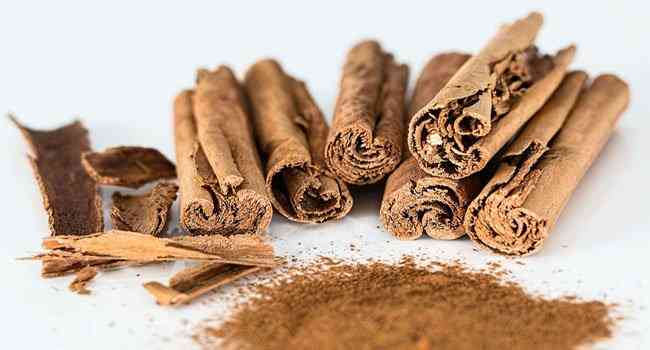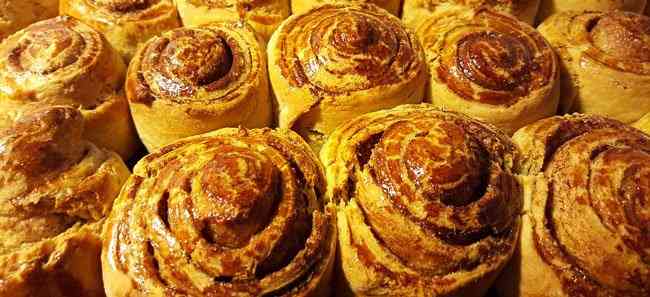Super Cinnamon, A Super Spice
By Krista DeKuyper | September 13, 2016 |

Welcome to this third article in our new “Healthy Spices” blog series. This time we examine super cinnamon, a healthy and sweet smelling spice that originates from Sri Lanka.
We examine cinnamon’s historical uses as well as its nutritional and medicinal properties.
We also offer some suggestions on the types of food that cinnamon goes well with, followed by some cautionary notes when ingesting it.
Historical Use of Cinnamon
Human beings have been using cinnamon for a very long time now. It is mentioned in ancient Chinese texts that date back to 2,700 BC, and this sweet smelling spice is mentioned in the Bible as well.
Cinnamon has been used in a wide variety of foods and has also been used in other manners. For example, the ancient Egyptians used cinnamon for its aromatic properties during their embalming processes1.
Cinnamon was a valuable trading commodity, and some reports indicate that Arab traders, who were transporting cinnamon to Europe overland, were loath to divulge where they were obtaining this sought after spice. This, combined with cinnamon’s exploding popularity in Europe, led to numerous expeditions that were charged with discovering new sources of the spice (among other things). A great example is Christopher Columbus, who was commissioned by Queen Isabella of Spain to explore the New World and find new sources of cinnamon and other valuable spices.
It was in the 1800s that cinnamon finally lost some of its trade luster due to its cultivation in other places around the world.
Today there are several different types of cinnamon. The most common type is cassia cinnamon, also called Chinese cinnamon. The “true” cinnamon is Cinnamomum verum, also known as Ceylon or Sri Lankan cinnamon.
Note: ingesting large amounts of cassia cinnamon can lead to adverse reactions with liver medication and diabetes medication. See the Cautionary Notes section for more.
What is Cinnamon?
Cinnamon comes from the inner bark of Cinnamomum trees. These are evergreen trees, and there are roughly 250 different species of the Cinnamomum genus. Cinnamon is cultivated from a handful of these trees.
The trees are grown for two years, after which the stems are collected by cutting them off just above the ground.
The stems are processed and the inner bark is removed. This inner bark is then dried, causing the stems to curl up (giving them that “cinnamon stick” appearance).
Cinnamon can be purchased as either sticks, ground up powder or a condensed oil for convenience.
To keep cinnamon fresh it should be stored in a cool, dry area. Refrigeration works well, and glass jars are ideal for storing it in an airtight environment.
Nutritional Properties of Cinnamon
Cassia cinnamon is very low in fats, sodium and cholesterol. It is a great source of vitamin K, iron and manganese. In fact, one teaspoon of cinnamon contains 22% of the daily recommended intake of manganese2.
It is also high in dietary fiber and contains significant amounts of calcium.
Medicinal Properties of Cinnamon
People throughout history have known that cinnamon has numerous medicinal properties, and recent evidence-based studies have supported these claims.
Note that the type of cinnamon and how it is harvested has a major impact on cinnamon’s medicinal properties. The majority of studies we looked at dealt with cassia cinnamon.
Property #1: Anti-Inflammatory
Cinnamon has been found to be a potent anti-inflammatory spice3.
While short-term inflammation is a beneficial process, long-term inflammation has been definitively linked to a wide variety of chronic diseases. Cinnamon fights against this inflammation, thereby reducing the chances of getting a chronic disease.
Studies indicate that cinnamon’s anti-inflammatory properties are a result of the flavinoids and 2′-hydroxycinnamaldehyde that it contains. Note that research in this area is still ongoing.
Property #2: Antioxidant
One of cinnamon’s most powerful properties is that as an antioxidant.
In fact, cinnamon has been found to be the most potent antioxidant of all natural substances, including garlic and oregano. This is due to cinnamon’s high concentrations of polyphenols.
It is this antioxidant behaviour in conjunction with its anti-microbial properties that results in cinnamon’s preservative properties.
Property #3: Anti-Bacterial
Cinnamon is a powerful anti-bacterial, which means that it fights infections that are bacterial in nature.
A study4 done in 2009 found that a solution containing cinnamon oil was just as effective as standard antiseptics commonly used in hospitals when it came to killing infections such as streptococcus and methicillin-resistant Staphylococcus aureus (MRSA)!
Property #4: Anti-fungal
Cinnamon has been shown to be a powerful anti-fungal.
In a recent study cinnamon oil was given to 60 test subjects who were suffering from intestinal Candida, a common yeast infection. After two weeks of treatment 72% of the test subjects did not have any yeast infection, while the remaining 28% had greatly reduced levels of intestinal Candida.5
Property #5: Anti-Microbial
Cinnamon has been found to be anti-microbial, and as such can be used as a food preservative.
In fact, a study published in the August 2003 edition of the International Journal of Food Microbiology6 found that just adding a few drops of cinnamon essential oil (which concentrates cinnamon’s medicinal properties) to 3 ounces of carrot broth inhibited the growth of Bacilleus cereus for 60 days.
Property #6: Anti-viral
Cinnamon is a well-known anti-bacterial, but what is not a well-known (or well documented as of yet) is cinnamon’s anti-viral properties.
One historical indication of its anti-viral properties occurred during the 1918 outbreak of the Spanish flu (a virus). During this time period people noticed that workers in cinnamon factories were not nearly as susceptible to the flu compared to other people in the general population.
In addition, a common treatment given to patients with the Spanish flu at the time was a mixture of cinnamon powder or oil mixed with milk.
Recent studies done by Professor Michael Ovadia, a scientist from Tel Aviv University, indicate that his cinnamon extract was effective in neutralizing various strains of Avian flu, the Sendai virus, and even the HIV virus. Not only that, but this extract also showed promise as an immunization against viral infections.7
Property #7: May Help with Type 2 Diabetes
Cinnamon has been found to improve blood glucose, lipid and cholesterol levels in Type 2 diabetes patients8.
As a result Type 2 diabetics who include cinnamon in their diet can reduce the risk factors associated with their diabetes.
Note that the degree to which cinnamon can help with glucose levels is still being tested and debated.
Cooking with Cinnamon
Cinnamon can be used in an incredibly wide variety of dishes.
It can be used in powdered form, in its stick form or as an extracted oil.
Cinnamon is often used in hot drinks. It goes great in a hot toddy, adding some taste as well as goodness to help fight off what is ailing you.
You can even throw a cinnamon stick into a cup of hot water for some tasty, nutritious tea (authors note: I like to have a cinnamon tea to start the day, and then I just keep adding water to it throughout the day).
Cautionary Notes
As mentioned previously, cinnamon seems to help with lowering glucose levels. As a result you must be careful when ingesting large amounts of cinnamon if you are a diabetic.
Cinnamon can also adversely react with diabetes medications such as rosiglitazone (Avandia), glimepiride (Amaryl), glyburide (DiaBeta, Glynase PresTab, Micronase), insulin, pioglitazone (Actos), chlorpropamide (Diabinese), glipizide (Glucotrol) and tolbutamide (Orinase).
Cassia cinnamon contains large amounts of coumarin, which is a phytochemical. People who have liver damage and are taking liver medication should avoid taking large amounts of cassia cinnamon. (Note: cassia cinnamon has over 60X as much coumarin when compared to Ceylon cinnamon).
In addition coumarin may also interfere with aspirin, NSAIDs (ibuprofen, etc.) and anti-coagulants like warfarin (Coumadin).
As a final word of caution, we re-iterate that different types of cinnamon along with where the cinnamon is grown has a huge effect on its medical properties and chemical constituents. Always know what type of cinnamon you are eating!
Conclusion
We hope you enjoyed this super spices blog article about cinnamon.
As we’ve seen there are few spices out there that can match cinnamon when it comes to nutritional and medicinal properties!
If you have any questions please feel free to contact us, we welcome any feedback you may have.
Sources:
- 1 http://www.history.com/news/hungry-history/cinnamons-spicy-history
- 2 http://foodfacts.mercola.com/cinnamon.html
- 3 http://www.ncbi.nlm.nih.gov/pmc/articles/PMC4003790/
- 4 http://www.sciencedirect.com/science/article/pii/S1010518209000523
- 5 http://www.sciencedirect.com/science/article/pii/S0254627212600260
- 6 http://www.sciencedirect.com/science/journal/aip/01681605
- 7 http://www.israel21c.org/key-to-cinnamon-anti-viral-extract-found-in-the-bible-says-israeli-researcher/
- 8 http://care.diabetesjournals.org/content/26/12/3215































